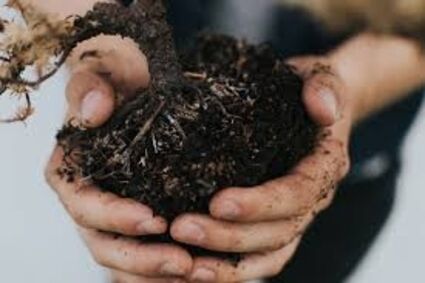Soil Basics: Microbes to pH
Last updated 8/16/2022 at 11:20am

Gardeners, hopefully most of you received rain the past week as forecast by local meteorologist. It certainly is a welcome respite and truly needed. And with the rain comes another added benefit, reduced daily high temperatures (though slight). It was enjoyable walking out to the garden mid-morning, harvesting vegetables and deciding which raised beds to plant with fall vegetables. Making mental notes for planting (I jot down in a garden planner inside), is when I realized the temperature seemed slightly cooler, and the fact I wasn’t sweating profusely! It got me thinking, autumn is only a few weeks away, now is the time to amend vegetable garden and flower beds, preparing for fall planting.
As a devoted, life-long plant enthusiast, working with hundreds of plants in my collection and Master Gardener plants, most plants share one common characteristic, they require soil to grow and flourish (with exceptions), regardless of if they are large or small, annual or perennial, flowering or not. And sadly, soil is one of the most overlooked items many new and a few seasoned gardeners simply don’t take seriously. Some gardeners purchase the least expensive soil they can find. Most seasoned gardeners have learned and appreciate the value of a robust soil medium. Good quality soil medium will make the difference in a successful gardening experience over a poor soil mix, which often leads to plant failure. Most of you are familiar with garden terms such as pH, microbes, and humus. But what do the terms mean and how do they effect soil?
Starting with pH-different plants require soil with different pH ranges, acidic (less than 7.0), alkaline (more than 7.0), or neutral (7.0). Perhaps you a wondering why plants need different soil pH? Nutrients move at different rates through the soil. The more acidic the soil, the faster the rate. As an example, if an acid-loving plant (such as a blueberry or azalea) is planted in alkaline soil, it will not receive nutrients at a fast enough rate. Applying fertilizer will not help, since the soil pH is too high and minimize nutrient availability, restricting it from “flowing” thru the soil.
Determining soil pH is one of the main reasons to have soiled tested initially before planting anything and then again, every 2 or 3 years. The soil analysis report will provide a plethora of information including amendments necessary for growing plants of choice. It is always best to gather soil samples and have soil analyzed through your local county extension office, which for us uses Texas A&M AgriLife Extension Services.
Here is a quick and simple test for soil pH you can perform while waiting on official soil test results.
Use at least one cup of garden soil, 5 – 7 inches below the soil surface. Remove rocks, roots, and other foreign objects for the most accurate result. Place half of the soil in a glass container and add ½ cup of distilled. Mix water and soil together until muddy. Next add ½ cup of vinegar, then wait. If the mixture fizzes or bubbles, the soil is more alkaline.
Similarly, test for soil acidity using baking soda. Thoroughly mix the other half of the soil with ½ cup baking soda in a glass container. Add ½ cup distilled water, mixing until a mushy consistency. Add more water if needed, then wait. If the mixture fizzes or bubbles, the soil is more acidic.
If nothing happens when doing either test, then most likely your soil’s pH is close to neutral.
Gardeners, salt becomes soils mortal enemy over time! Some gardeners may not realize using commercial, synthetic fertilizers contain salts. Salts cause soil nutrients to bind together and plants are unable to take them up. Additionally, this causes soil compaction, decreasing the activity of beneficial soil microbes, while increasing the activity of pathogens known to cause disease. Organic fertilizers contain zero salts and are much better for soil. Plants are unable to determine fertilizer is synthetic or organic, but your soil can.
Humus is finished compost, an organic matter that provides beneficial microbes nutrients. Humus also absorbs 4 to 5 times more moisture than clay soil, storing it thus making nutrients easily available for plants. Humus reduces nutrient leaching and reduces the need for additional fertilizer. Humus plays an important part in reducing soil erosion, which is one more reason to compost and mulch.
Microbes present in the soil are the key to producing humus, for without them, organic matter will remain intact, requiring a greater time interval to break down. The initial 2-4 inches of good quality garden soil contains almost a billion microbes! It takes many types of organisms (bacteria, algae, fungi) to break down organic material to humus. Remember, humus (compost) is a gardener’s best friend and will help your garden soil thrive, allowing gardeners to reduce or eliminate synthetic fertilizers!
Let’s go out and grow ourselves a greener, more sustainable world, one plant at a time!
If you have specific gardening questions or would like more information, contact the Orange County Master Gardeners Helpline: (409) 882-7010 or visit our website: https://txmg.org/orange, Facebook: Orange County Texas Master Gardeners Association or Email: [email protected].












Reader Comments(0)